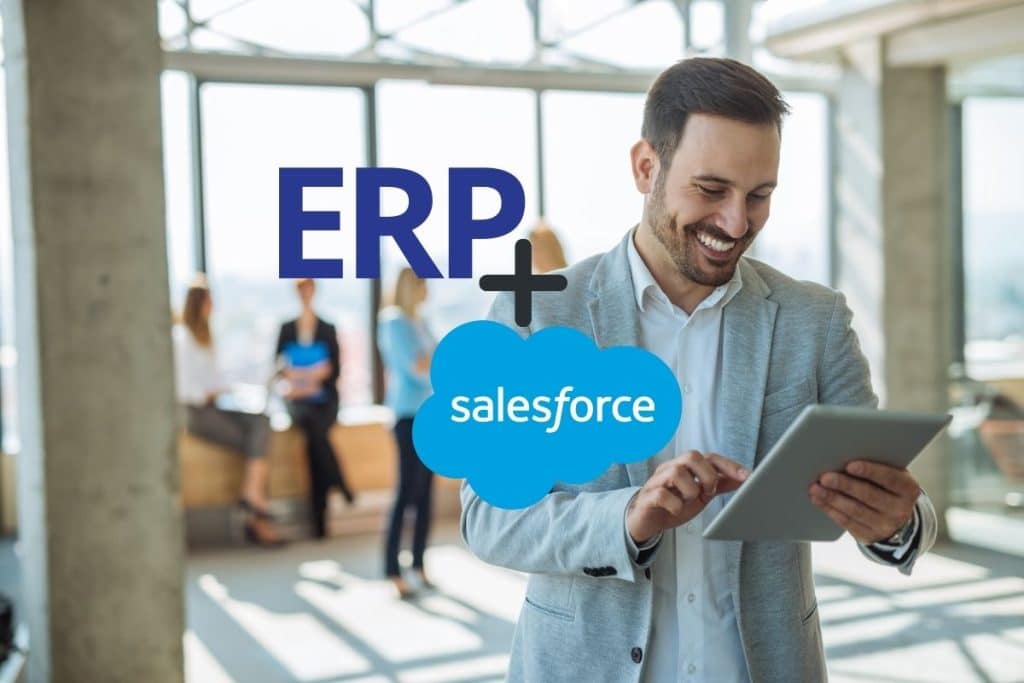If you know anything about Salesforce, then you’re aware there are considerably more than five reasons to justify its value to your business. When it comes to planning out your ERP solution, however, it gets a bit more intriguing.
Outlined below, these 5 key reasons your ERP should be running on Salesforce are what we consider some of the most compelling [and no-brainer] selling points of the bunch.
Let’s get started!
Why Should Unify Your ERP and CRM?
Salesforce is many things but, at its core, it’s most famous for its CRM prowess. So, it’s important to understand why you should unify your ERP and CRM, to begin with. I won’t dedicate much time to this explanation here as we have a full article already written on this topic (go check it out!).
The important takeaways, though, include the ability to unify your departments into a single, cohesive team and the empowerment of having a 360-degree view of your business health.
So, that’s where we will begin.
1. Salesforce Customer 360
With the Salesforce Customer 360 product, your teams can track and report on every phase of your buyer’s journey, from prospect to customer. Specifically, sales, service, marketing, commerce, IT, and analytics come together on the same platform. Leveraging helpful workflows, traditional customer relationship management, your ERP, and countless apps, the platform can easily expand your business.
The intent here is the see the world through your customers’ eyes. With this aggregated data and the tools to decipher it all, you can determine what makes your customers tick through their history with you. This is a powerful way to craft buying experiences with your brand bespoke to each customer.
2. Salesforce Sales Cloud
Expanding on the tools available through Customer 360, the Sales Cloud empowers your sales force with all the touchpoints and interactions each customer has experienced with your organization. No longer will a salesperson, especially following a territory switch, reach out to an existing customer cold and uninformed.
Information on changes in manufacturing to accommodate specific customer requests, for example, can be gleaned from your ERP and processed within the Sales Cloud.
If past performance portends future purchase demand, this data is invaluable.
Team leaders can keep an on the performance of each salesperson in real-time, enabling them to provide guidance and correction before a problem gets out of hand. Individual salespeople can track their pipeline performance and get ahead of missed opportunities.
3. Salesforce Commerce Cloud
If you operate an e-commerce website, or it’s at least a component of your business, your additional “salesperson” is the website itself. This liaison between your company and the customer is interacting with your client base 24/7, often without human interaction (at least on your side of the equation).
Imagine empowering your website with the automation necessary to pitch related product accessories, category adjacent wares, and other upsells automatically. With Commerce Cloud, this becomes a reality.
Pulling from the same data source as your human teams, your website can provide tailored buying experiences on the fly. Not only can it pivot based on past customer behavior but also do so while tracking real-time interactions with your content.
Of course, all of this newly acquired customer data gets dumped back into your centralized database as well, updating records and your individual teams as the changes occur.
Following the sale, order automation, notification, and processing occur and pull each team into the workflow at the appropriate time. In addition, your ERP solution is updated as this is happening and areas of the ERP, such as inventory controls, reflect the latest changes.
4. Tableau Analytics
If you’re unfamiliar with Tableau, it’s a cloud-based data visualizer alternative to traditional spreadsheet applications, like Microsoft Excel. It’s gained in popularity over the years due to its ease of use and is now, through acquisition, proudly part of the Salesforce family.
Building upon the centralized data concept we mentioned earlier, Tableau Analytics allows your team to more easily understand the data collected and helps them get their heads around what it means for your business.
Your teams can now make data-driven decisions and do so with the latest data collected. What’s more, AI-powered insights help with forecasting and get smarter as time goes on.
It’s also easier than ever to share reports with other areas of your business, keeping the necessary stakeholders informed. Factoring in inventory and the manufacturing process, visualizing data directly from your ERP using Tableau Analytics makes quick work of a previously cumbersome task.
5. Service Cloud
After all of the marketing and sales efforts, manufacturing, and distribution, you will need to turn your attention to customer service. If the least expensive lead is the customer you already have, it’s vital that you keep them happy. A poor customer service experience can tarnish a brand image and lose a formerly loyal customer despite the quality of your goods.
Recently, Salesforce purchased Slack and incorporated it into its Service Cloud offering. This means best-of-breed messaging and communication throughout your organization. This also means it’s likely you can get answers for your customers faster than ever.
Service Cloud also leverages AI-powered workflows and automation, allowing your team to handle large volumes of service requests. Perhaps, this may also translate into less required staff in this department of your company.
Tapping into your ERP, you will be able to quickly administer recalls based on customer feedback or track down shipments of interest more quickly than ever before.
BONUS: Field Service Lightning
If your business involves on-site field service, this next one is a must! Salesforce developed Field Service Lightning to help your mobile employees view work orders, and job scheduling, and tap into the knowledge of your centralized data source from on the go.
This mobile solution provides two-way communication between your mobile team and the home base, updating each other in real time. You can now optimize the productivity of your mobile fleet with the same efficiencies as the in-house teams.
With these powerful features comprising the robust platform of our ERP, you can see why using GoldFinch ERP alongside the Salesforce suite of products can elevate your entire business.
To learn more about how connecting Salesforce with your ERP can help your business, Contact Us today.



